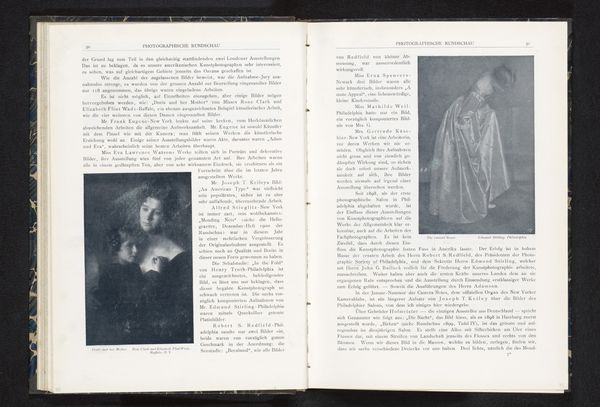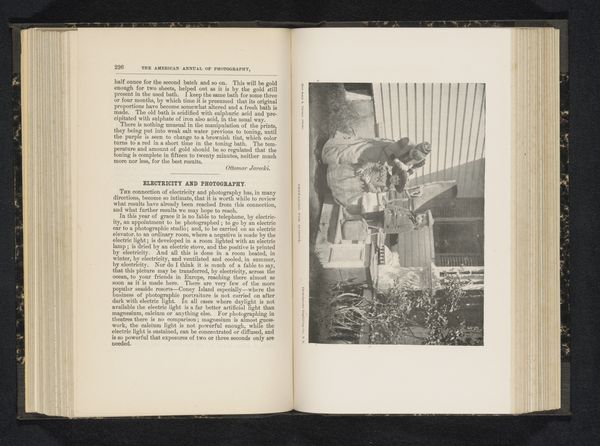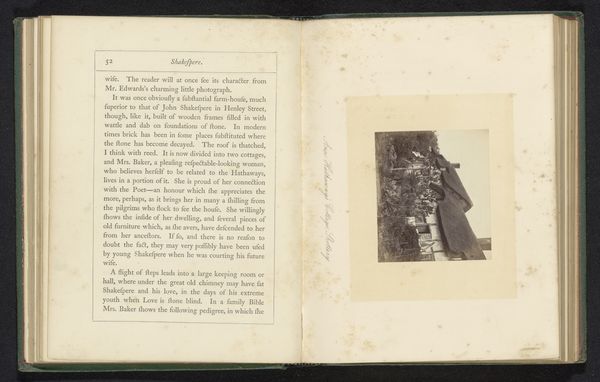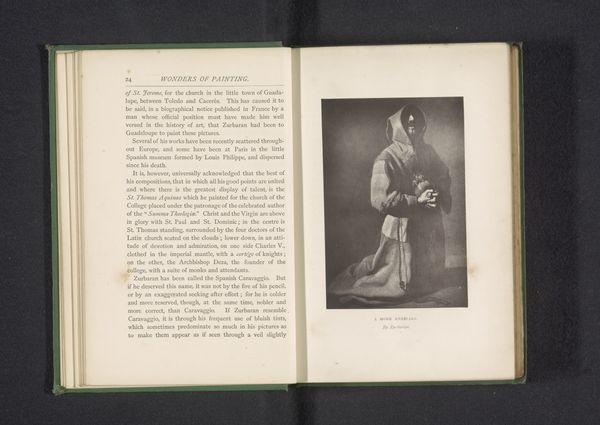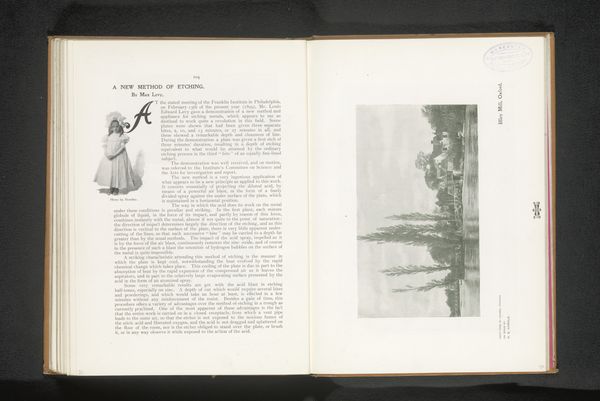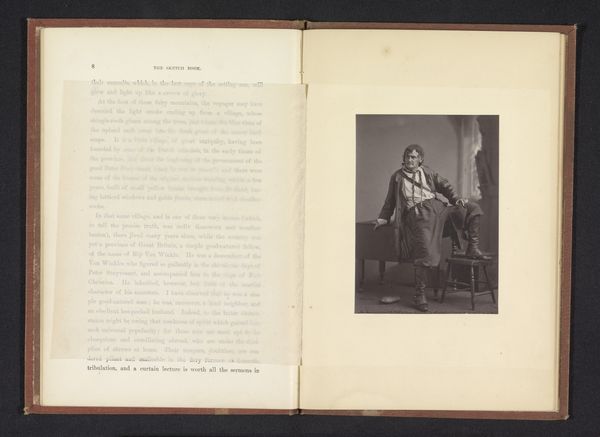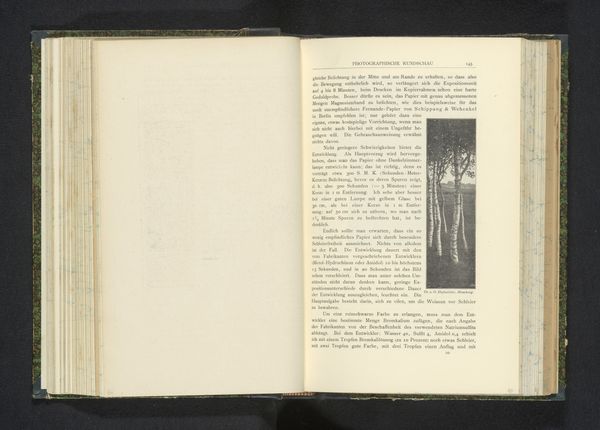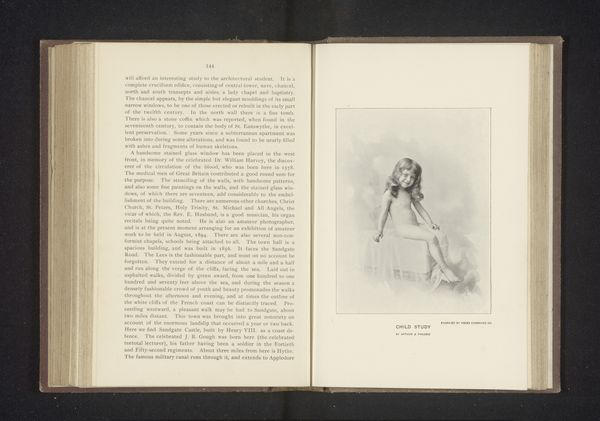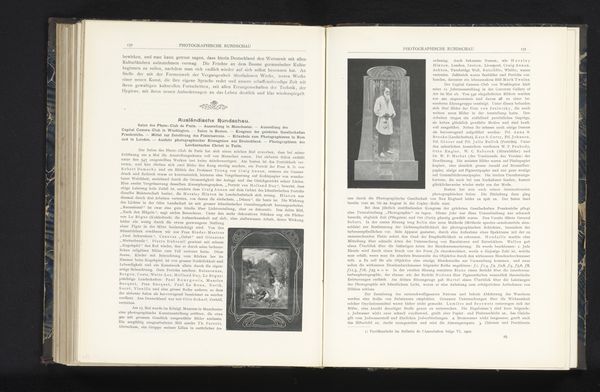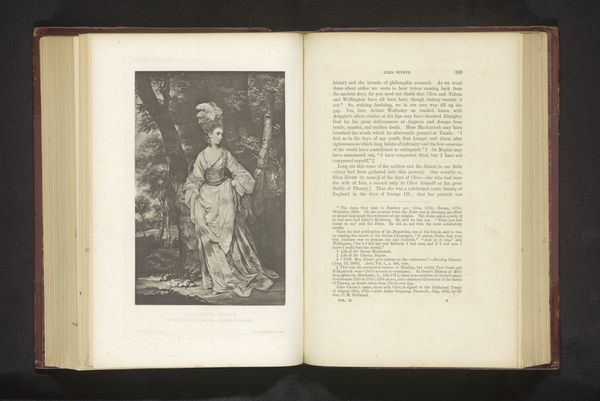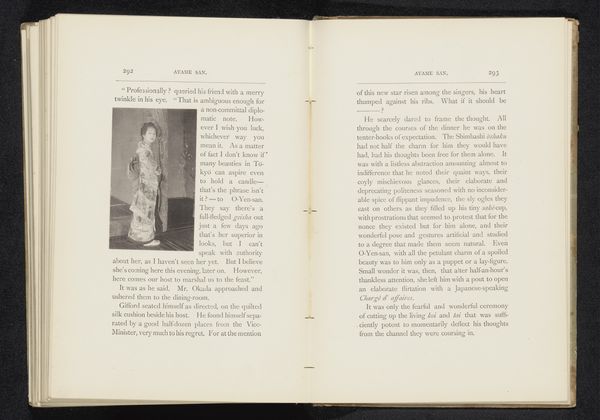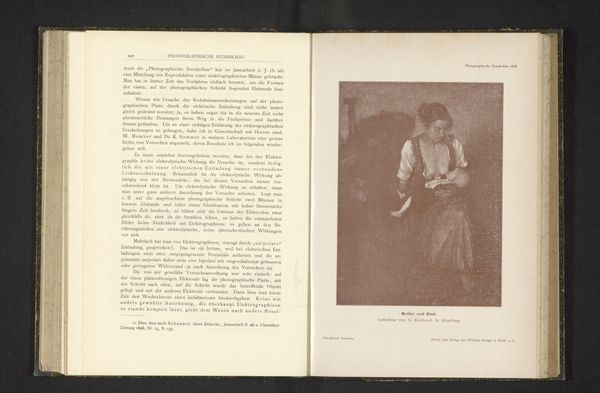
Portret van een onbekende vrouw met een kopje in haar hand en een schotel in haar schoot before 1903
0:00
0:00
print, photography
#
portrait
#
pictorialism
# print
#
book
#
photography
Dimensions: height 162 mm, width 98 mm
Copyright: Rijks Museum: Open Domain
Editor: Here we have an image of a page from an old book. The image shows a photographic portrait titled “Portret van een onbekende vrouw met een kopje in haar hand en een schotel in haar schoot," or "Portrait of an unknown woman with a cup in her hand and a saucer in her lap,” dating to before 1903. The photographic style reminds me of the Pre-Raphaelites because the woman seems like a fairy-tale figure. How would you interpret the symbolism in this pictorialist photograph? Curator: The "unknown woman" herself embodies a fascinating cultural memory. Notice how she holds the cup and saucer. This simple act of drinking tea becomes a symbol of leisure, status, and, more broadly, civilization itself. Think about how tea rituals have served as a stage for social performance, a demonstration of refinement, and even a subtle expression of power dynamics across different cultures and moments in history. Does her identity as an "unknown woman" also inform your impression? Editor: Yes, I'm curious about that. Why is she unknown? Is that just lost to time? Or is her anonymity an intentional choice, meant to represent any woman placed in such a staged, elegant setting? Curator: Exactly. Consider the interplay of revelation and concealment here. On one hand, we have a detailed depiction of her clothing, accessories, and posture. But on the other, her namelessness invites us to project our own interpretations, weaving her into a larger narrative about women, representation, and the visual language of portraiture. Does the printing on the opposite page affect how you read the photograph itself? Editor: That's a great point. It does lend the image an aura of documentary evidence. It makes the woman feel both further away, situated in the past, and like a figure of history, somehow more important than a simple portrait. I hadn't considered it before, but the two images combined create an interesting dialogue between them. Curator: Indeed. Both are records of a past age, and in dialogue, they may prompt reflections on progress and change. Considering photography's role in constructing and preserving identity, what does it mean to capture someone so vividly, yet leave her ultimately unknown? Editor: It makes you consider how much context changes meaning.
Comments
No comments
Be the first to comment and join the conversation on the ultimate creative platform.

